
Dogs are cute. Dogs are cuddly, and they make great company. In simpler words, what else is there when you’re looking for a good domestic animal?
Dogs look, smell, feel and sense everything about you. And when they feel accepted, they will treat you like family.
This is why social creatures like us cannot get enough of dogs. They have a special charm that we do not possess; they make us comfortable with being vulnerable around their presence.
For our children, this unconditional love that dogs give us, definitely qualifies them as your children’s lifelong guardians.
Today, we’ll talk all about the dynamics between pet dogs and children, so that you can make an informed decision for you and your child!
Adopting a Dog VS Buying a Dog: Why Does This Matter?
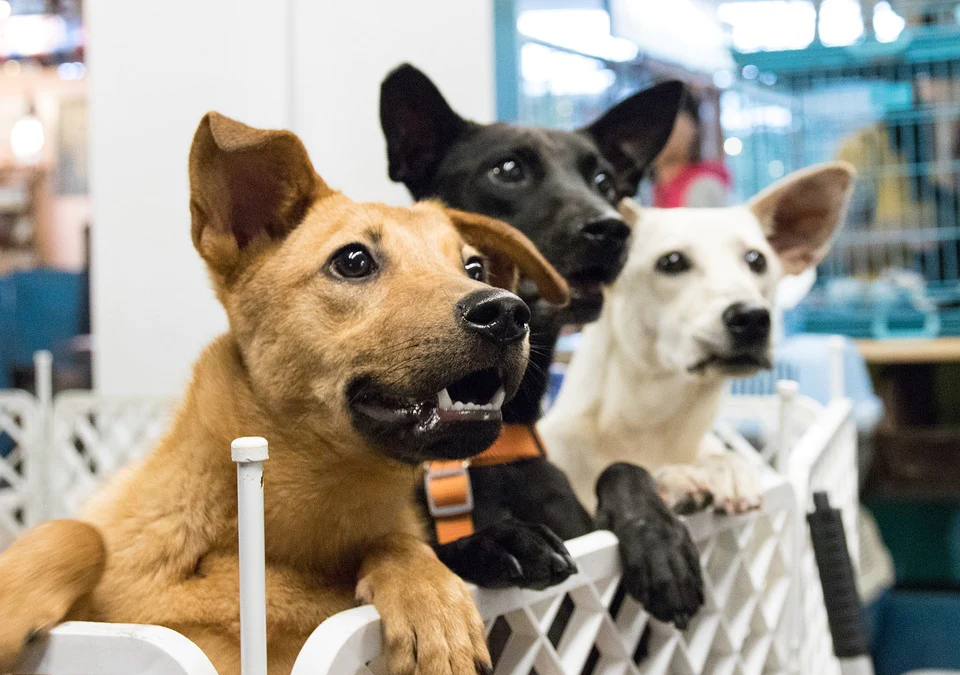
[Neater Pets]
Before we get started on the topic, we want to take a moment to answer a common question that many people might have.
Adopting and buying— what’s the difference?
Firstly, adopting means taking in grown dogs from a shelter, rescue centre, or animal welfare organisation. On the other hand, buying a dog means going to a breeder or pet store to choose a puppy or purebred dog.
While most would opt to buy and raise a puppy from infancy with a choice in breed and age, it does come with a considerably higher cost than adopting a dog.
On the contrary, adopting a dog means you and your child are giving it a second chance at life and helping to reduce animal homelessness. Many abandoned dogs in shelters may be euthanized if they’re not adopted, so adopting a dog is a compassionate act that saves a life.
However, we understand that raising a pet dog is no charity. Many would still choose to pay more just to avoid the stigma of sheltered dogs with potential ‘defects’ like health or behavioural issues. Buying a dog is also quick and easy, allowing you to avoid the lengthy process of adoption.
To that end, we would like to put out a heartfelt message to all would-be dog owners reading this article.
It is a common misunderstanding that dogs in shelters have something wrong with them.
In fact, very few have any issues that would prevent them from finding a loving home. Shelter dogs are properly sterilised and well cared for by volunteering pet lovers. We should not assume that just because a dog is older, they are not playful or won’t live long. Adopting an older dog could also mean many years of happiness and companionship!
With that out of the way, let’s break down the conversation that you’re here to have. Should my child adopt a dog in SIngapore?
Advantages: Why Should My Child Adopt a Dog?
The phrase “a dog is a man’s best friend” still rings true today, as dogs seem to be the go-to choice for pets in Singapore.
A survey on pet ownership conducted early last year showed that over half the respondents were dog owners in Singapore. Evidently, dogs are the most popular pets, with cats being a far second.
What makes up this demand for pet dogs, and why should you consider dog adoption for your child? We’ll break it down for you:
Give Your Child a Lifelong Friend

[Unsplash]
Dogs are great emotional support! Expect loyalty, friendship and companionship from these adorable furballs. And in today’s society, these are big reasons to want to adopt a dog. After all, we are often out at work to provide for the family, so we usually leave our children to a caretaker or a childcare centre.
Not to mention, spending time with a dog can have a calming effect on children!
Dogs can satisfy the emotional needs of children by giving them enormous amounts of attention and engagement as they grow up.
As such, dogs and children develop an inseparable relationship this way, continuously honing their emotional and social skills. When facing life’s challenges, our children will have a headstart with a confidence boost!
Improve Your Child’s Physical Fitness
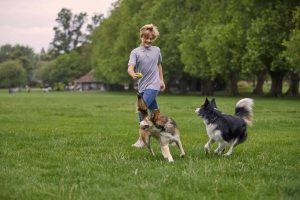
[PitPat]
Dogs don’t just keep your children mentally healthy, they’re also good fitness trainers!
If you want your children to get into a healthy lifestyle, dogs are really good motivators for exercise.
Don’t believe us? Well, let’s list a few recreational activities that your child can do with their pet dog! Walking the dog, playing fetch, playing frisbee to name a few. Your child will be working up a sweat just keeping up with the energy of their pets! In turn, an increased physical activity also means benefiting from the rewards of a good exercise!
Teach Your Child to be Responsible
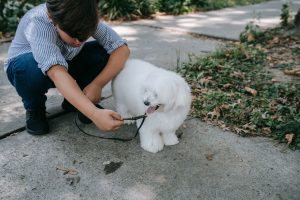
[Pexels]
Raising a dog is no easy task on their own, and your young ones will have to learn social responsibility as they take charge of their pet’s well-being at a young age.
In the process, they’ll develop empathy from understanding their pet’s needs and become better at communication as they train the dog. Of course, children will also appreciate teamwork when family members do their part to help out.
Exercising trust and responsibility, your child will learn much during their journey of becoming a good caregiver, and this will all translate into strong moral values crucial to their emotional growth.
Disadvantages: What Should I Consider Before Adopting a Dog in Singapore?
Be warned! Raising a dog is not all sunshine and rainbows.
As the interest in pet dogs in Singapore rises, the abandoned ones also rise in proportion. As much as we wish this wasn’t true, there are indeed many dog abandonment cases in recent years.
To avoid something like this from happening, you must be sure that the family is ready to accept the dog into the family for life. Your child must be prepared to care for the dog. We’ve condensed them into three factors: Time, Money and Space.
Time Commitment

[Pexels]
Time. Can the household spare enough time to do the following?
1) Feeding regular meals several times a day.
2) Cleaning the dog’s waste several times a day.
3) Playing or training with the dog once a day.
4) Taking the dog out for a walk at least once a week.
5) Showering the dog at least once a week.
6) Time given to the dog for scheduled grooming and or veterinarian visits.
7) Maintaining cleanliness, as keeping a house clean with dogs requires consistent efforts like regular sweeping, vacuuming, and managing pet odor
Time is finite and valuable, especially in Singapore. In certain households, household chores and pet care is managed with the help of domestic maids. In other cases, neighbours on close terms can also help to alleviate some of these duties when needed.
However if your household is not open to any of the options above, you and your child should be prepared to invest a good amount of it into your pet dog.
From something as basic as taking the time to feed them at regular intervals of a day, to taking them outdoors for play, the family must make necessary time investments for the dog. If your child is not old enough to walk the dog, the adults must take their time out to do it in their stead.
A collective household decision must be made as to whether the family is comfortable with spending its personal time on raising a pet dog for the rest of its life.
Financial Responsibility

[Pexels]
Money. This is a comprehensive list of costs that you might have to pay for (updated as of 2023).
| Item / Service | Cost |
| Adoption Fee | $70-400 |
| Dog License | $15 |
| Microchipping | $50 |
| Dog Kennel / Fence | $50 |
| Dog Bowl & Water Dispenser | $20 |
| Dog Toy | $5 |
| Dog Leash | $5 |
| Dog Food (Kibble Diet) & Snacks | $30 / month |
| Pee Pads | $10 / month |
| Dog Shampoo (non/medicated) | $5-15 / month |
| Dog Grooming Service (basic/full) | $600-1440 |
| Veterinarian Consultation (Check-up) | $25-65 / month |
| Dog Insurance | $300 / year |
| Dog Medical Care | $292 / year |
| Routine Booster Vaccination Shots | $40-100 |
Visiting a pet clinic or grooming salon can take up a considerable amount of money, especially when it comes to treatment for skin allergies or infections.
Do not neglect any other miscellaneous costs that might be incurred when it comes to a pet’s welfare, as dogs often require specific solutions to their needs. GrabPets, for example, costs much more than normal transport services.
As these are necessary expenses to keep your dog healthy and your house free of dandruff, long-term considerations to affordability must be made when it comes to pet care.
Housing Constraint

[Pexels]
Space. Can the household roof another family member?
While a dog generally takes much less space than a human, they still require their own living quarters big enough to feel comfortable, safe and not restrictive.
Additionally, many landlords and lease agreements restrict the keeping of pets in their properties.
Live in private property? That’s okay, because the government allows you to own up to three dogs! But if you stay in a HDB flat, you are only allowed one small breed!
It’s not like there hasn’t been cases where people have raised two or more dogs, even if they had been staying in a HDB neighbourhood. If they have the ability to care for and train them, the dogs will not become too wild to cause noise complaints.
As a result, the $4,000 HDB fine is simply an unspoken rule that floaters break, because of the simple reason that the government does not go by every dog owner’s home to enforce it.
Should you choose to ignore this rule as well and decide to adopt two dogs in a HDB flat, do keep in mind to train the dog well! You wouldn’t want problematic barking and destructive behaviours to incite neighourhood reports, would you?
How to Get Started With Dog Adoption in Singapore
Raising a dog may sound daunting, but you’ve decided that you and your child are ready to adopt a dog. Now, you’re beginning your search for the one to bring home.
Be warned that the process can be long and tedious, so be sure to prepare well ahead in advance!
1. Visiting a Dog Shelter
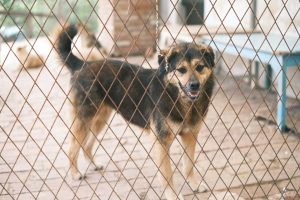
[Pexels]
The first thing you’ll want to look out for is the pet adoption centres that are available island-wide. If you’ve already come into this article with prior interest, chances are that you’ve already narrowed down your options.
Here are a few of the best Pet Adoption Centres in Singapore that you can consider! (Some shelters require you to make an appointment before coming over, so do give them an email or drop them a call to do so!)
| Shelter | Known For | Contact & Adoption Fees |
| Action for Singapore Dogs | Registered charity with a track record of rehoming over 3000 dogs |
[email protected] https://asdsingapore.com/ Cross Breed: $300 Pedigree: $400 |
| Animal Lovers League | Registered charity and home to over 500 dogs and cats |
[email protected] 97533320 / 96708052 https://www.animalloversleague.com No Adoption Fees |
| Hope Dog Rescue | No physical shelter/office, but is instead an altruistic effort by fosterers to maintain temporary homes to rescue dogs |
[email protected] http://hopedogrescue.blogspot.com/ $350 |
| Causes for Animals Singapore | Registered charity that frequently employs programs and policies to promote awareness for pet welfare |
[email protected] 97937162 / 96973491 https://www.causesforanimals.com/ <6 months: $100 +$200 (four 1-hour group sessions of puppy socialisation classes) >6 months (private): $250 >6 months (HDB): $250 + $250 (inclusive of 6 sessions of Basic Obedience classes) |
You can make a more informed decision with your child by taking the time to visit some of these animal shelters. After all, when it comes to raising a dog for life, it’s very important to get a feel for them in person instead of viewing these profiles online.
You can also benefit from a second opinion from dog experts or past dog adopters, as they can advise you on the nuances of living with an adopted dog that you may have missed.
2. Choosing The Right Dog For Your Child
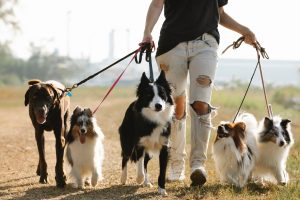
[Pexels]
Secondly, you’ll have to pick what kind of dog that your child is looking for. After all, the dog is going to be your child’s lifelong companion. Be sure not to take this moment away from them, as it can become a lasting memory for your little ones!
In the meantime, you should also be conscious of your financial and legal boundaries. You may refer to some of our country’s guidelines for dog ownership.
Here is a list of all of our HDB-approved dog breeds:

| (HDB-Approved as of 24/10/2023) Dog Breed | Unique Trait/s | Average Life Expectancy | |
| 1 | Affenpinscher | High-energy, ideal apartment dogs, making good use of small spaces and helping with minor pest-control issues | 12 – 14 years |
| 2 | Australian Silky Terrier | Very vocal guard dog that requires some level of training. Alert and active & enjoys interaction with its owner! | 13 – 15 years |
| 3 | Australian Terrier | Easy to train, and generally does not bark aggressively around others. A friendly breed that enjoys human company. | 13 – 15 years |
| 4 | Bichon Havanese | Sporty & intelligent toy breed that likes being with their owners. They’re quite averse to water, but can be trained to overcome it. | 13 – 16 years |
| 5 | Bichon Frise | Has its signature cotton-ball-like curl fur. A socialite among dogs and great around children. | 14 – 16 years |
| 6 | Bolognese | A smart & active guard dog that is reserved and cautious with strangers. | 12 – 14 years |
| 7 | Border Terrier | Brave, adaptable and loves to chase things. A ‘big dog in a small body’. | 12 – 15 years |
| 8 | Boston Terrier (Light/Middleweight) | Fast and agile runners that should be kept on a leash outside! Playful, sturdy & tolerant with children. | 11 – 13 years |
| 9 | Brussels Griffon | High tendency to bark if not trained (requires patience)! Very energetic and demands lots of its owner’s attention. | 12 – 15 years |
| 10 | Cairn Terrier | An affectionate & extrovert breed, but may not be good with small furry animals or strange cats due to its inquisitive nature! Has a shaggy-looking face. | 13 – 15 years |
| 11 | Cavalier King Charles Spaniel | A generally quiet & delicate nature, great playmates for children. Requires moderate amounts of combing to maintain their furry coat. | 12 – 15 years |
| 12 | Chihuahua | Loving & loyal, and a classic household name. Has a range of personalities that can suit a range of first-time owners. | 12 – 14 years |
| 13 | Chinese Crested Dog (Hairless) | Happy, animated & agile jumper and climber. Can be very needy, and may display destructive tendencies when left alone for too long. Odourless without much shedding issues. | 13 – 18 years |
| 14 | Chinese Crested Dog (Powderpuff) | Happy, animated & agile jumper and climber. Can be very needy, and may display destructive tendencies when left alone for too long. | 12 – 13 years |
| 15 | Coton de tulear | Happy-go-lucky, bright & gentle dog with cotton-like fur. | 14 – 16 years |
| 16 | Czech Terrier (Cesky Terrier / Bohemian Terrier) | Gentle-natured, tough (sometimes stubborn) and agile. Moderate training and motivation is required to put its energy and stamina to good use. | 12 – 15 years |
| 17 | Dachshund (Light and Miniature) | Even-tempered and affectionate, but can be snappy if play gets too boisterous so they’re usually better suited to slightly older children. | 12 – 15 years |
| 18 | Dandie Dinmont Terrier | Not as excitable or reactive as some terriers, but they’re still lively and affectionate towards its owner, and reactive to new faces. | 12 – 15 years |
| 19 | English Toy Spaniel | Bears a strong likeliness to the Cavalier King Charles spaniel. Very playful and affectionate. Docile around humans, and does not have a tendency to bark. | 10 – 12 years |
| 20 | German Hunting Terrier (Jagdterrier) | A fearless and brave dog that enjoys spending time outdoors as it is an active, working breed. May require high-performance foods that are costlier to keep up with its activity. | 12 – 15 years |
| 21 | Griffon Brabancon | Has an expressive squished monkey-like face with big, beautiful eyes. Sensitive, playful and affectionate. Often shows off endearing displays of self-importance, and can become prone to spoiling. | 12 – 15 years |
| 22 | Hairless Dog (Xoloitzcuintle) | Long, slim and elegant. Is shy and reserved around strangers, but is generally peaceful and content. Will have a tendency to snuggle in colder weather. | 12 – 15 years |
| 23 | Italian Greyhound | Elegant and graceful, affectionate and loyal, low grooming needs. Can be fragile and prone to injury. | 12 – 15 years |
| 24 | Jack Russel Terrier | Energetic and intelligent, great for active owners, good at learning tricks. But can be stubborn and independent, and thus may not get along well with other pets. | 13 – 16 years |
| 25 | Japanese Spaniel (Chin) | Gentle and loving, good with families and children. However patience is a prerequisite when training as it may require some effort to be house-trained. | 10 – 12 years |
| 26 | Japanese Spitz | Friendly, playful, and good with families, with a plumed tail & a fox-like appearance. | 10 – 16 years |
| 27 | Lakeland Terrier | Brave, confident, adaptable, and an excellent watchdog. May be aggressive towards other dogs. | 12 – 15 years |
| 28 | Lhasa Apso | Loyal and affectionate, good for apartment living, low exercise requirements (but still good to have). May require high grooming needs. | 12 – 15 years |
| 29 | Löwchen (Little Lion Dog) | A typical playful & vocal dog. One of the larger toy breeds, has a front coat similar to a lion’s mane. | 13 – 15 years |
| 30 | Maltese | Lovey-dovey with the family. They make for hardy and adaptable pets. While sometimes stubborn and willful, they respond well to rewards-based training. | 12 – 15 years |
| 31 | Manchester Terrier | Intelligent, alert, and excellent rat hunters. But it may not convert that energy towards strangers as they are more reserved towards unfamiliar faces. | 14 – 16 years |
| 32 | Miniature Pinscher | Energetic, lively, and has low grooming needs. May not get along with other pets. Features its distinctively high-set ears. | |
| 33 | Miniature Schnauzer | A sturdy breed that enjoys rigorous play. Do not shed much, and is accepting for allergy sufferers. Can be smart and easily trained, but has a high tendency to bark if not properly occupied or trained. | 12 – 14 years |
| 34 | Norfolk Terrier | Active, clever and surprisingly tenacious for its size. They are much more social, friendly and tolerant than other terriers. | 12 – 15 years |
| 35 | Norwich Terrier | May be small in size, but this dog has a big personality with spirit and spunk. Has prickly upright ears akin to a fox. | 12 – 15 years |
| 36 | Norwegian Lundehund | A rare breed sporting some unique physical features such as having an unusual number of toes (6 instead of 5), can wiggle their ears & has extremely flexible joints, allowing it to make sharp angles with its forelegs. Has a high activity level that the owner needs to maintain. | 12 – 15 years |
| 37 | Papilion | Noticeable with its wing-shaped ears. Bears a happy, alert, and friendly personality. It is also an agility dog that has a rep for winning sports at the highest levels, and can also succeed just as well with more elaborate tricks. | 13 – 16 years |
| 38 | Pekingese | Dignified & strong-willed, some have called it an ‘opinionated’ dog that isn’t afraid to let its thoughts show. It has the appearance of a tiny lion, with a ‘mane’ that requires lots of attention to maintain a healthy and good-looking coat. | 12 – 14 years |
| 39 | Pomeranian | The smallest of the Spitz breeds, with an appearance resembling a ‘miniature fox’. Very loyal to their families, although it generally bonds to one person. It is tiny and fragile so care must be taken, but they should also have opportunities to be active like a ‘real dog’ instead of being a mascot as there can be a tendency to spoil it too much. | 12 – 16 years |
| 40 | Poodle (Toy/Miniature) | Another popular, good-tempered guard dog. Very sensitive to vocal intonation, and thus responds well to training. | 12 – 15 years |
| 41 | Pug | One of the most popular companion dog breeds, albeit somewhat divisive due to its unique facial features. A happy, sociable companion, that can be friendly with both owners & strangers. | 12 – 15 years |
| 42 | Schipperke | Is sometimes born tail-less. Clever and lively enough to learn things quickly, but also get in trouble just as fast! Good dog socialisation and habituation will help it from being overly paranoid over unfamiliar things. | 13 – 15 years |
| 43 | Scottish Terrier | Highly intelligent breed that can shape its personality over time, making it sometimes stubborn and strong-willed when it comes to training. It however, does not let this shy away from its affection with the family. | 11 – 13 years |
| 44 | Sealyham Terrier | Signature ears that are attractively dropped forwards. Cute, funny, affectionate, outgoing, and trainable, if a bit stubborn. Great mood makers. | 12 – 14 years |
| 45 | Shetland Sheepdog (Sheltie) | A working breed with an endearing show-dog appearance. Keeps a sharp and active surveillance over its surroundings. Because of its vigilance, warming up to strangers can take time. | 12 – 14 years |
| 46 | Shih Tzu | A popular breed famed for its adorable and regal appearance. Can be affectionate and playful, but does not require much exercise to keep it engaged. Enjoys playing games and will chase balls but may not return them. Patience and consistency is key to training its intelligent mind properly. | 10 – 16 years |
| 47 | Silky Terrier | A natural watchdog that stays vigilant to outsiders. Requires training to fit into a communal living space to avoid excessive barking. Has a strong hunting instinct, sated with toys and games. Great playmates for children. | 12 – 15 years |
| 48 | Small Continental Spaniel (Continental Toy Spaniel) | Signature ‘butterfly-shaped’ ears. Extremely high in energy that should not be left for too long lest it develops undesirable behaviours. Socialisation and time together will pacify its nature to become more friendly towards strangers. | 12 – 15 years |
| 49 | Small English Terrier | Affectionate, intelligent, and trainable companions with a big personality. They have a low-shedding coat, making them suitable for allergy sufferers, and their playful and energetic nature ensures endless entertainment. | 12 – 14 years |
| 50 | Small Spitz | Fluffy companion with a double coat that requires minimal grooming. Sports a charming and lively personality. It is also easily trainable, making it a joy to teach new tricks. |
12 – 15 years |
| 51 | Smooth Fox Terrier | Has a strong aptitude as a trick dog, often shown around the world in performance troupes or circuses. An incredibly energetic breed with a body built to match in terms of speed & agility. Is easily trainable, but needs a hand in controlling its strong hunting instincts. | 12 – 15 years |
| 52 | Tibetan Spaniel | Usually reserved, but can be vocal towards new people. Has a silky, medium length coat that forms feathering on the ears, legs and tail. | 12 – 15 years |
| 53 | Toy Fox Terrier | A small, athletic build that embodies liveliness even within apartments. Displays common signs of intelligent thinking, and is a highly trainable pet. It is usually independent, so it must be given its own space at times. | 13 – 14 years |
| 54 | Toy Terrier | Aside from its appearance, Toy Terriers bear the likeness in temperament and preferences to the Toy Fox Terrier. | 12 – 15 years |
| 55 | Volpino Italiano | Highly recognisable with its fluffy double coat. Is loyal, intelligent, and good with families. | 14 – 16 years |
| 56 | Welsh Terrier | As with most terriers, an independent nature and sharp mind mean this is not a dog to be left to their own devices or allowed to become bored When displeased, it reveals its trademark “stink eye. to you. | 12 – 15 years |
| 57 | West Highland Terrier (Westie) | Like typical terriers; smart, independent & a little stubborn. Have a tendency to be nuisance barkers and serious digger, so ample training is required to keep them in households! | 12 – 16 years |
| 58 | Wire Fox Terrier | Has a distinctive “beard” and expressive face, which adds to their appeal as a small family pet. Requires exercise and mental simulation to stay healthy. | 12 – 15 years |
| 59 | Yorkshire Terrier | Small size, affectionate, and good for apartment living. Boasts a high-maintenance luxurious and silky coat that makes them stand out from the crowd. Has a confident and feisty nature. | 12 – 15 years |
It’s also good to know that in all size groups (small, medium, large, and giant), mixed breed dogs live slightly longer than purebred dogs. On average, a mixed-breed dog lives for about half a year longer. Good care can also extend a dog’s life expectancy, sometimes well beyond its years!
If you’re looking for a recommendation, some of Singapore’s favourites include Toy Poodles, Shih Tzus, Pomeranians, Malteses, and Chihuahuas.
3. Request For Adoption

[Pexels]
Next, you’ll have to submit your interest in adoption to the specified animal shelter. You’ll be given an adoption application form to complete, usually sent to you via email. Here are some things to take note of when filling in this form:
- It’ll take about 2 weeks for your application to be reviewed and approved.
- Your information will be used to assess if any suitable dogs are suitable for you.
- You can also indicate your chosen preference or specific dog in mind.
You’ll be shortlisted based on the household’s lifestyle among other factors to determine if you’re suitable as a dog owner or not.
Depending on how the shelter operates, you’ll usually be granted a viewing and bonding session during this requesting process. This will allow the shelter to assess your interaction with the dog before you can proceed with the next step.
However, please do not treat this bonding session as strict as a job interview! Raising a pet should feel natural and part of daily life, so just take the chance to let your child get a feel for it.
4. Setting Up a Homestay

[Pexels]
Once you have a dog that’s been approved, it’s time for a trial period. That means monitored living with the dog in your home!
Before you are ready for the homestay, the shelter will schedule a visit or request photos for a physical assessment of your home! Things like your living space, yard, and other conditions will be observed in order to ensure that the dog has enough space to live, play, and exercise. If advised, changes must be made in order to meet an approved standard.
A date will then be arranged for the dog’s arrival, giving you time to prepare a given list of pet supplies, including food, toys, a bed, and a litter box. This can also be a good time for a shopping trip with your child so they too, can get involved with the process!
During the homestay, you will be signing a paper called the Homestay Agreement, a formality to take on full responsibility for the dog while it’s under your care. This is mainly to safeguard against bad actors, so don’t worry too much about it!
The homestay period usually lasts for one to two weeks, wherein an adoption counsellor will be in contact with you to answer your concerns. It is also at the end of this stage when you have to make the final decision.
6. Approval, Adoption Fee & Pet License: Finalising the Adoption Process

[Pexels]
You feel like this is the one. Your child ADORES it. They’re all over the dog every day, and you find no problems with sustaining such a livelihood for the dog.
You think that you’ll have a good second home for them. The guys from the dog shelter see no issues during the homestay too. Since all lights are green, this will be the time to make the final decision!
When your family and the dog are ready, the shelter will contact you again for the Adoption Agreement. Once signed, you will have to pay an adoption fee varying in price based on which shelter you go to and what kind of dog you end up adopting.
If the dog is not registered prior to their life at the shelter, you will also be required to apply for a dog license at the point of adoption.
When you’re through this process, the ownership is officiated! The last thing you need to do is to pick up the dog and welcome them to their second home!
Conclusion: A Good Name to Welcome a Fresh Start

[Pexels]
No matter your decision, your choice will be life-changing for both dog and child.
Always do your research, and assess whether your household can commit to a new family member. You always want to give the best for your child and the dog.
And for those who’ve been persuaded by this article, we wish you the best in the process so you find the right dog for your child.
Lastly, we would like to leave a suggestion for would-be owners reading. The first day of the adopted dog’s life in your family is a memorable one. As such, it is only fitting that your family gives a symbolic gesture to bring in a fresh start. Give the dog a new name.
Cast off its old name that may be filled with bad memories, or simply make it a permanent part of your family; This new name is one that your child will always call for in the future.
We hope that with our article as a guide, your children too, can grow up while cherishing dogs as lifetime friends.
To read more about this topic, check out a few of our related articles below.
READ NEXT:
Pets 101: How to Teach Your Children to Take Care of Pets
7 Uncommon Pets Singapore Uni Students Can Keep While Staying in Dorms
